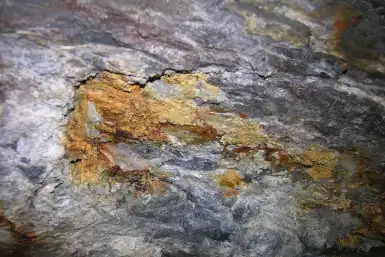Hard Water
65% of UK Mains Water is Designated Hard
Causes Limescale in Pipes & Appliances
1mm of Scale Increases Energy Costs by Over 7%
Hard Water Contains Essential Minerals for Bone Health
Chemistry of Hard Water
Water is said to be hard if it contains high levels of certain minerals such as Calcium (Ca) and Magnesium (Mg). When hard water is heated these minerals combine with carbon compounds to form hard water scale often called Scale, Limescale or Calcite. The chemical name for this is Calcium Carbonate which has the formula CaCO3.

Calcium Crystals

Magnesium Crystals

Manganese Crystals
These minerals, called ions are metal atoms with one or more electrons removed. They carry a charge so are soluble in water. This is illustrated by the following chemical equation example for Calcium (Ca).
Pure water (H2O) contains no minerals and is therefore said to be soft.
Why Does Hard Water Occur?
When rain falls it dissolves Carbon Dioxide (CO2) in the air making the rain acidic. This rain dissolves minerals in certain types of rock, mainly sedimentary rock such limestone which creates hard water.



Igneous rock such as granite is resistant to acid rain hence no minerals are dissolved. Water from areas of igneous rock tends to be soft. Hence water hardness is more to do with the local rock type rather than the water itself.
How is Water Hardness Measured?
The major component of hard water is Calcium (Ca).
While Magnesium (Mg) will be present at 15 – 20% that of Ca other minerals/ions represent < 1% of the concentration of Ca.
Hard water can be presented as Total Hardness which represents the concentration of all dissolved ions expressed as mg/l or ppm Calcium Carbonate (CaCO3).
These are expressed as mg/l of dissolved substance ie 150mg/l CaCO3 is 150 mg of CaCO3 in 1 litre of water.


Do I Live in a Hard Water Area?

If you can’t identify your exact location on the above map your local water company can provide a hardness value. Simply go to your suppliers website, search water hardness and enter your postcode.
What is Considered to be Hard Water?
The following table gives an indication of Soft to Very Hard Water values.
| Classification | Level |
|---|---|
| Soft | Less than 100 mg/L |
| Medium | 101 - 150 mg/L |
| Hard | 151 – 300 mg/L |
| Very Hard | Greater than 301 mg/L |
Impact of Hard Water Scale (Limescale)
Hard water scale clogs pipes, significantly increasing energy costs and reduces flow. It also reduces equipment life, damages white goods and adds to the need for additional maintenance. In addition calcite scale allows the growth of dangerous bacteria such as legionella and pseudomonas.



How is Limescale Formed?
The main problem with hard water is the build-up of Limescale (CaCO3) which is formed when hard water is heated.
Hard water contains soluble Calcium Hydrogen Carbonate, Ca(HCO3)2 which when heated converts to CaCO3. This drops out of solution as a hard solid and adheres strongly to metal, plastic or wood.
This is shown by the following chemical equation:

Without treatment the vast majority of Scale forms as Calcite. This is a hard, brittle scale which adheres strongly to heated surfaces. It has very poor thermal conductivity, restricts flow, contributes to higher maintenance needs and reduces equipment life.
CALCITE scale also forms a safe breeding ground for bacteria and microorganisms.
What is the Cost of Hard Water?
Increase energy cost due to heat losses from scale::
- 1.5 mm of scale increases energy costs by 12%.
- 5 mm adds 38% to the energy costs.
- An estimated £1Bn in energy losses in the UK due to hard water scale.
- Cost of additional system maintenance.
- Reduced equipment life and early replacement cost.
- Flow restriction reducing system efficiency.
- Scale encourages microbial activity and all the cost implications thereof.
Why Treat Hard Water?
Without treatment any system will have a significantly shorter lifespan and a considerably more expensive one.
UK professional bodies strongly recommend hard water scale treatment.
Such treatment will keep a building system clean, less prone to equipment failure, reduced need for maintenance and use significantly less energy lowering both costs and environmental impact.
As a guide for a new build/system reducing scale will save 50% of the annual energy cost during the first 3 years.


